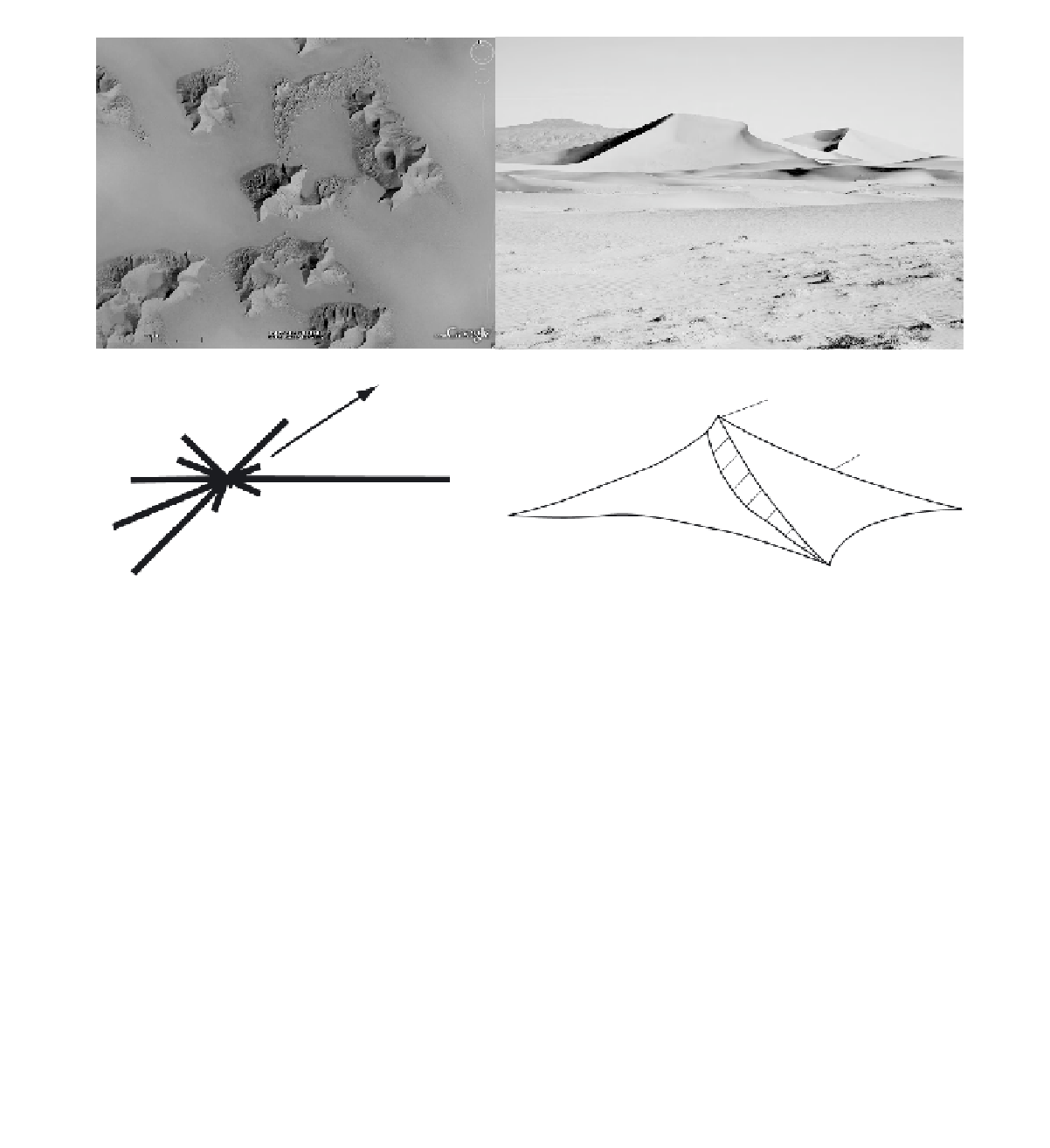Geoscience Reference
In-Depth Information
(a)
(b)
(c)
(d)
Crest
Arm
Plinth
Eastern Namib Sand Sea
RDP/DP = 0.25
Figure 19.6
Star dunes: (a) clusters of star dunes, eastern Rub al Khali, Saudi Arabia; (b) Silver Peak, Nevada; (c) wind regime
of star dunes; (d) anatomy of star dunes.
apart (Bullard
et al.
, 1995; Fitzsimmons, 2007), with a
length of 20-25 km. The ridges may join in Y-junctions.
Several varieties of this pattern can be identified (Figure
19.6), related to sand supply, distance from sand sources,
vegetation cover and persistence of dune-forming winds
(Bullard
et al.
, 1995; Wasson
et al.
, 1988).
Compound linear dunes (Figure 19.5(a) and (b)) con-
sist of several narrow, closely spaced (100-200 m) seif-
like ridges on the crest of broad linear plinths, which are
spaced as much as 2.5 km apart. Good examples occur in
the southern Namib Sand Sea (Lancaster, 1989c) and the
Fachi Bilma Erg in Niger (Mainguet and Callot, 1978).
Complex linear dunes (Figure 19.5(c) and (d)) are com-
prised of relatively straight, continuous, linear ridges on
which other dune types are superimposed. Such dunes
are typically spaced 1-2.5 km apart and reach heights of
50-250 m. Complex linear dunes in the Namib Sand Sea
and Saudi Arabia consist of a sinuous main crestline with
superimposed crescentic dunes on the dune flanks (Lan-
caster, 1989c; Livingstone, 1993). In places, the crest line
may consist of a series of peaks similar to star dunes sep-
arated by lower sinuous sharp crest lines. Such complex
areas (e.g. the eastern Namib Sand Sea and southeastern
parts of the UAE).
The origins of linear dunes and their relationship to
formative wind directions have been the subject of con-
siderable debate (Lancaster, 1982b; Livingstone, 1988;
Tsoar, 1989). A substantial body of empirical evidence
now indicates that linear dunes form in bidirectional
wind regimes with the two modes separated by 90
◦
or
more. This includes correlations between the occurrence
of linear dune and information on the directional vari-
ability of wind regimes in these areas (e.g. Fryberger,
1979): studies of internal sedimentary structures (Bris-
tow, Bailey and Lancaster, 2000; McKee, 1982; McKee
and Tibbitts, 1964), experiments in flumes (Reffet
et al.
,
2008; Rubin and Ikeda, 1990) and numerical simulations
(Werner and Kocurek, 1997), as well as detailed process
studies on linear dunes (Livingstone, 1986, 1988, 1993;
Tsoar, 1983). Models for linear dune formation that invoke
boundary layer roller vortices in which helicoidal flow
sweeps sand from interdune areas to dunes (Hanna, 1969)
are not generally supported by empirical data - evidence
for the occurrence of such boundary layer structures is

